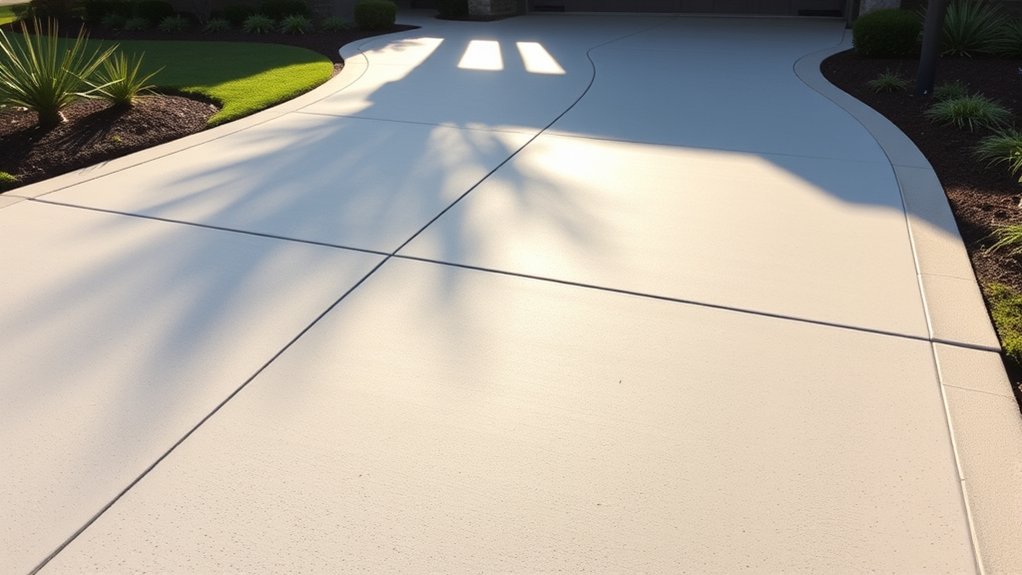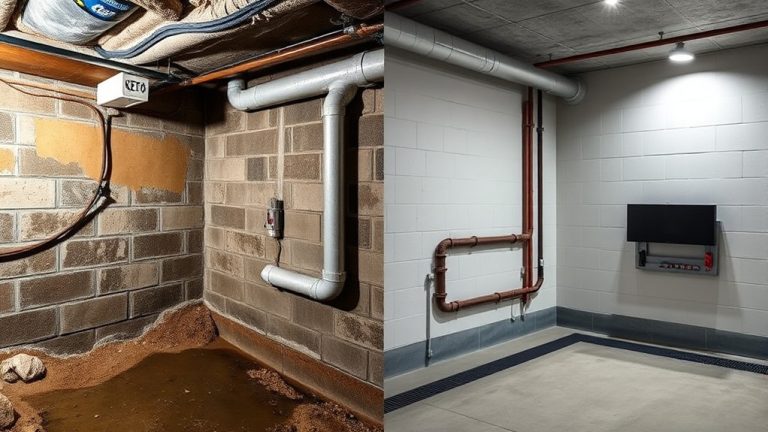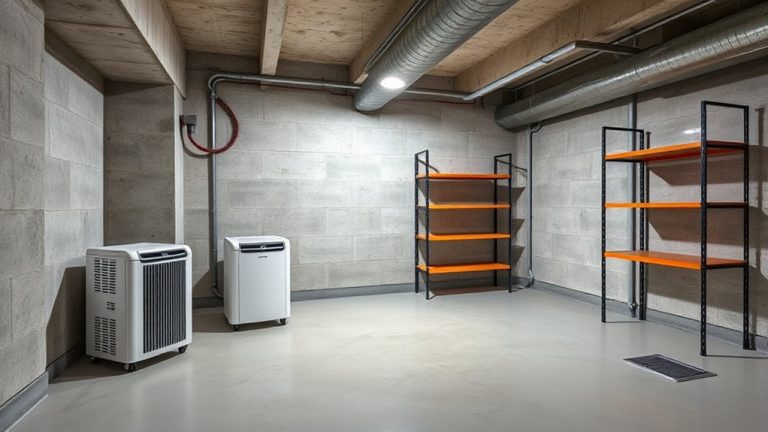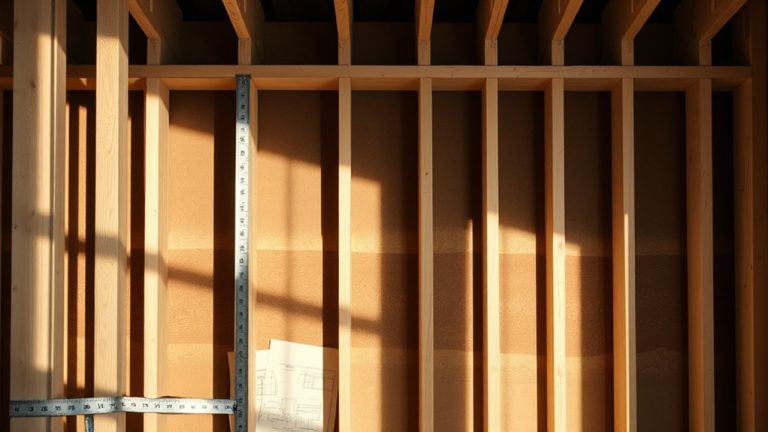Concrete surfaces are your property's foundation, silently bearing tremendous weight and environmental challenges. You'll face inevitable wear and potential damage if you don't take proactive maintenance steps. By understanding how moisture, temperature, and daily stress impact your concrete, you can prevent costly repairs and extend its lifespan. Inquisitive about protecting your concrete from cracking and deterioration? The strategies you'll unearth can save you thousands in potential reconstruction costs.
Key Takeaways
- Maintain proper drainage around concrete surfaces by ensuring correct soil grading and implementing effective water management techniques to prevent moisture accumulation and structural stress.
- Apply high-quality chemical sealants annually to protect concrete from moisture penetration, environmental damage, and temperature-related expansion and contraction that can cause cracking.
- Regularly inspect concrete surfaces for minor cracks and address them promptly using appropriate repair materials before they develop into larger structural vulnerabilities.
- Control irrigation and water flow near concrete areas to minimize ground movement, soil pressure, and potential water-related damage that can compromise structural integrity.
- Perform seasonal maintenance, including thorough cleaning, debris removal, and careful power washing, to prevent organic material buildup and detect early signs of potential concrete degradation.
Understanding Concrete's Vulnerability to Damage
Although concrete seems incredibly strong, it's surprisingly vulnerable to various types of damage. Its chemical composition can deteriorate when exposed to harsh environmental conditions, causing microscopic cracks that compromise concrete's structural integrity over time. Foundation wall pressure from surrounding soil and improper drainage can also contribute to concrete degradation and structural weakening. Weather extremes, chemical exposure, heavy loads, and improper installation can accelerate this breakdown. You'll want to understand these vulnerabilities to protect your concrete surfaces effectively. Freeze-thaw cycles, moisture penetration, and ground movement can create stress fractures that gradually weaken your concrete. Regular inspection and proactive maintenance are key to preventing long-term damage and preserving your concrete's strength and appearance.
Proper Drainage and Water Management
Water can quickly become concrete's silent destroyer if you don't manage it properly. Proper soil grading is imperative to prevent water from pooling near your concrete surfaces, which can cause serious damage over time. You'll want to ascertain that the ground slopes away from your concrete, allowing water to drain naturally.
Controlling irrigation patterns also helps safeguard your surfaces. By strategically positioning sprinklers and monitoring water flow, you can minimize potential water-related harm. Understanding and implementing effective drainage techniques will save you time, money, and frustration in maintaining your concrete's long-term integrity. Yard drainage solutions can prevent water from causing extensive damage to your concrete and foundation.
Sealing and Protecting Concrete Surfaces
Protecting your concrete surfaces goes beyond basic maintenance—it's about preserving their strength and appearance for years to come. You'll want to start with thorough surface preparation techniques to guarantee maximum sealant effectiveness.
Chemical sealant application is critical for defending against moisture, stains, and environmental damage. You'll need to clean the surface completely, repair any minor cracks, and choose a high-quality sealant matched to your specific concrete type.
Managing Temperature and Environmental Stress
How can concrete surfaces withstand extreme temperature fluctuations and environmental challenges? You'll want to focus on thermal insulation and understanding freeze-thaw cycles. Proper protection helps your concrete resist cracking and degradation during harsh weather conditions.
Strategic sealing and maintenance can shield surfaces from temperature-related stress, preventing costly repairs. By applying quality sealants and choosing materials with high durability, you'll create a resilient surface that can handle dramatic temperature shifts. Your proactive approach will guarantee your concrete remains strong, intact, and looking great, no matter what environmental challenges come its way.
Regular Cleaning and Debris Removal
Because debris and dirt can gradually erode your concrete surfaces, regular cleaning becomes a critical maintenance strategy. You'll want to adopt proactive seasonal maintenance routines to protect your investment and extend surface longevity.
Key cleaning considerations include:
- Use power washing techniques carefully
- Remove organic materials promptly
- Clear salt and chemical residues
- Inspect for potential damage during cleaning
- Schedule routine maintenance intervals
Protect your concrete by investing time in consistent cleaning practices. By addressing dirt, stains, and potential contaminants early, you'll prevent long-term degradation and maintain your surface's structural integrity and aesthetic appeal.
Addressing Minor Cracks and Imperfections
While thorough cleaning helps prevent surface damage, concrete can still develop minor cracks and imperfections over time. You'll want to address these issues quickly to prevent further deterioration.
Patching techniques can help you restore your concrete's appearance and structural integrity. For small cracks, use concrete repair products designed to fill and seal minor imperfections. If the damage is more extensive, consider concrete resurfacing as a cost-effective solution.
Professional Inspection and Maintenance Strategies
Regular professional inspections can save you significant time and money in concrete maintenance. By investing in ongoing contractor oversight, you'll safeguard your concrete surfaces from potential long-term damage and costly repairs.
Key professional maintenance strategies include:
- Annual thorough surface evaluations
- Early detection of structural weaknesses
- Implementation of specialized repair techniques
- Advanced diagnostic scanning
- Preventative treatment recommendations
Experts can identify subtle signs of deterioration that untrained eyes might miss. They'll assess environmental factors, recommend targeted interventions, and help you develop a proactive maintenance plan. With professional guidance, you'll confirm your concrete remains strong, durable, and resilient against potential cracking and wear.
Frequently Asked Questions
Can I Repair Concrete Cracks Myself, or Do I Need Professional Help?
You can tackle small concrete cracks with DIY repair techniques, but hire professional inspection services for larger or structural issues to guarantee a lasting, reliable fix.
How Often Should Concrete Surfaces Be Inspected for Potential Damage?
You'll want to inspect concrete surfaces annually, but look out for signs of deterioration every six months. Early detection prevents costly repairs and maintains your surface's integrity and freedom from extensive damage.
What Are the Most Common Causes of Concrete Surface Deterioration?
You'll find improper drainage patterns and poor concrete mixture are primary culprits of surface deterioration, causing water infiltration, structural weakness, and accelerated decay of your concrete structures.
Will Weather Conditions Impact the Longevity of My Concrete Surfaces?
Weather dramatically impacts your concrete's durability. Extreme temperature fluctuations and prolonged moisture exposure will cause expansion, contraction, and potential cracking, threatening the integrity of your surfaces.
How Much Does Professional Concrete Maintenance Typically Cost?
Professional concrete maintenance costs vary, but you'll typically spend $500-$1,500 annually. Your estimated maintenance budget depends on surface size, local rates, and seasonal maintenance schedule.



